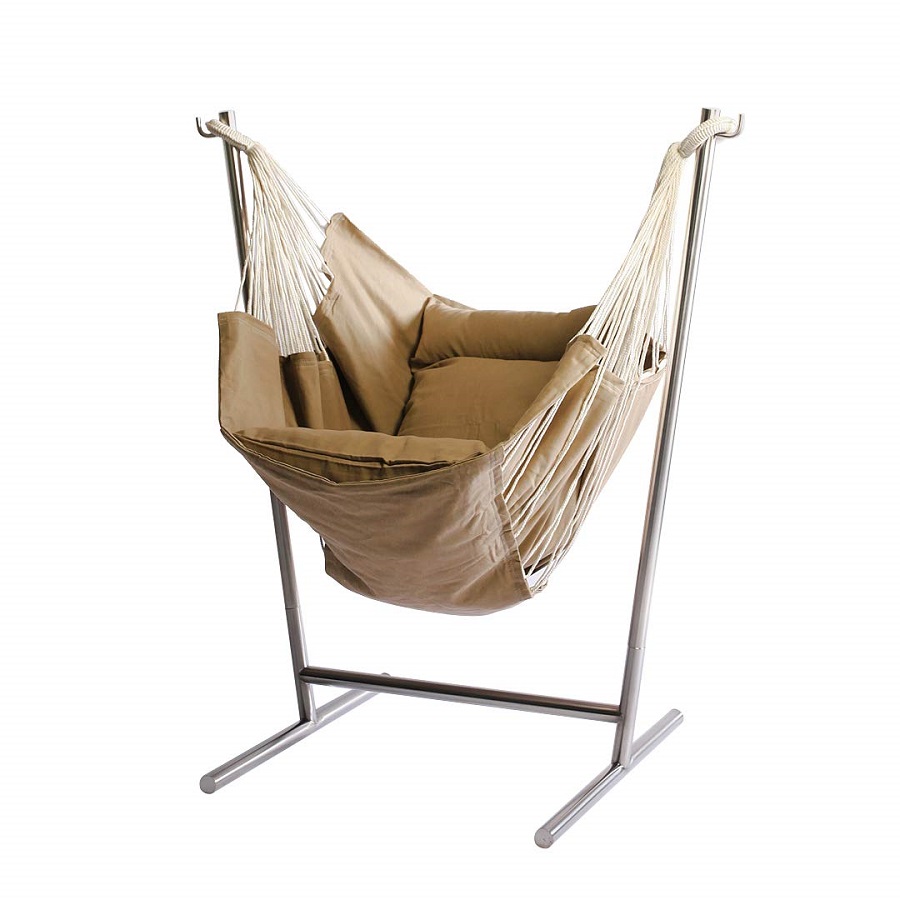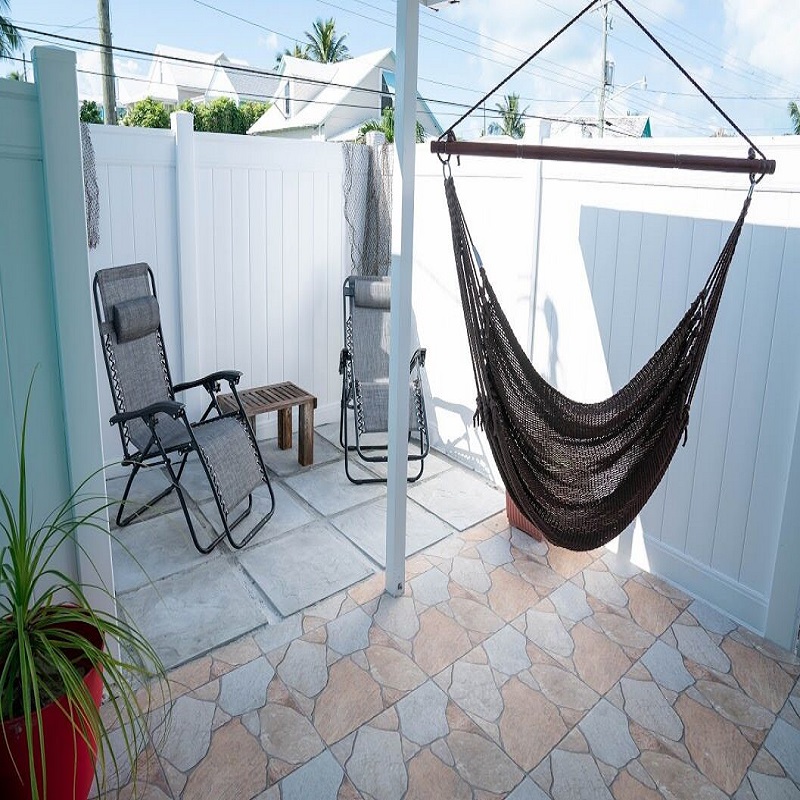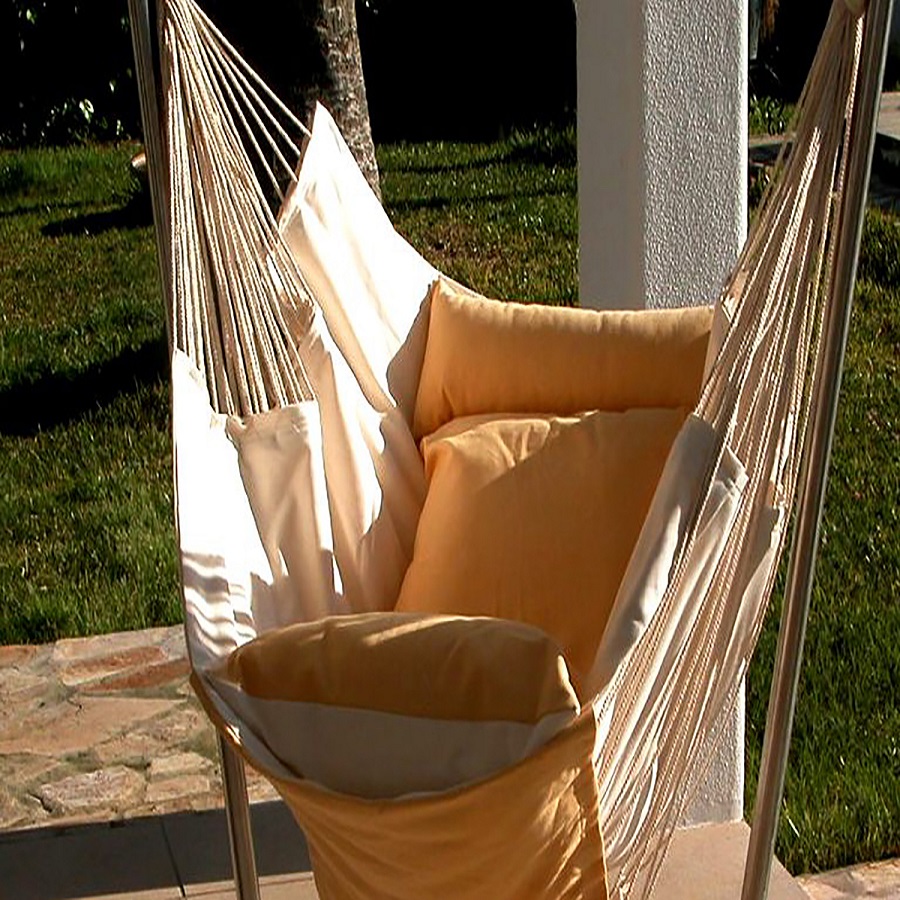History of Hammocks in Spanish Culture
The history of the hammock in Spanish culture stretches back centuries. In Spanish, a hammock is known as ‘hamaca,’ a term originally derived from the Taino culture of the Caribbean, who were among the first to use hammocks. The Spanish adopted the hammock upon their arrival in the New World, recognizing its utility for staying off the ground and away from vermin.
Hammocks soon became a staple aboard naval vessels, providing sailors with an efficient way to sleep within the confined spaces of ships. They also helped in preventing falling overboard in rough seas. The design evolved over time, with the Spanish developing their own variations to suit local climates and materials.
In Spain and throughout Latin American countries, hammocks serve both a practical and a cultural role. They are common in homes and public spaces, offering a place to relax during the hot midday hours. In these regions, the hammock also symbolizes leisure and the enjoyment of life.
Spanish missionaries and colonists spread the use of ‘hamacas’ worldwide, further integrating hammocks into various cultures. Today, the hammock remains an icon of relaxation and comfort, deeply rooted in Spanish-speaking countries’ ways of life. Understanding the history and cultural significance of hammocks in Spanish culture will deepen your appreciation for this versatile and comfortable item, known affectionately as ‘la hamaca’.

Essential Hammock Terms in Spanish
When discussing hammocks in Spanish, becoming familiar with key terms is crucial. Whether you’re shopping for one, setting it up, or simply enjoying the swing, this vocabulary will enhance your experience. Let’s dive into some essential hammock terms in Spanish.
Hamaca
‘Hamaca’ is the Spanish word for hammock. It encapsulates all variations and styles. When you hear ‘hamaca,’ think of comfort and relaxation under the sun or stars.
Soporte
This term translates to ‘support’ and refers to the stand or structure that holds the hammock off the ground. It’s vital for free-standing hammocks.
Cuerdas
Cuerdas means ‘ropes.’ These are the cords used to tie a hammock to trees, posts, or a hammock stand. Ensuring good quality ‘cuerdas’ is key to a safe and secure setup.
Gancho
A ‘gancho’ is a hook, an essential element for attaching the ‘cuerdas’ of a hammock to the soporte. Make sure the ‘ganchos’ are sturdy for long-lasting use.
Tela
The ‘tela’ refers to the fabric material of the ‘hamaca.’ It can vary from cotton to nylon, depending on your preference and the hammock’s design.
Descansar
While not exclusive to hammocks, ‘descansar’ means to rest. It’s a word that perfectly describes the essence of lounging in a hammock.
These foundational terms form the basis of hammock-related conversations in Spanish. Learning them will help you navigate the world of ‘hamacas’ with more confidence and ease.

Types of Hammocks and Spanish Terminology
When exploring the diverse world of hammocks, knowing the specific types and their Spanish terms enriches your understanding. Here’s a breakdown of popular hammock varieties and their corresponding Spanish vocabulary.
Hamaca de Viaje
Travel hammocks, or ‘hamaca de viaje,’ are lightweight and portable. Ideal for campers and hikers, they easily pack into small bags.
Hamaca Paraguaya
The ‘hamaca paraguaya’ is a traditional Paraguayan hammock. Its fabric is often colorful and handwoven, reflecting intricate designs.
Hamaca con Barra
A hammock with a spreader bar is known as ‘hamaca con barra.’ This type keeps the fabric taut and open, making it simpler to get in and out of.
Hamaca Maya
The Mayan Hammock, ‘hamaca maya,’ is famous for its delicate weaving and breathable material. It’s perfect for hot climates.
Hamaca de Tela
Fabric hammocks, or ‘hamaca de tela,’ refer to those made of one piece of cloth. They are known for comfort and durability.
Each type of hammock offers a unique experience. Choose the right ‘hamaca’ based on your needs, whether it’s for travel, aesthetic value, or weather compatibility. By familiarizing yourself with these terms, the ‘hamaca’ world becomes much more accessible and enjoyable in any Spanish-speaking setting.

Materials and Accessories in Spanish
When diving into the world of hammocks, or ‘hamacas,’ it’s important to understand the materials and accessories that make each hammock unique. Understanding these terms in Spanish can greatly enhance your shopping experience or discussions with Spanish-speaking hammock enthusiasts. Here is a list of common materials and accessories associated with hammocks, along with their Spanish translations:
Materiales
The term ‘materiales’ refers to the materials used in hammock construction. Common materials include:
- Algodón: This is cotton, a popular choice for its softness and breathability.
- Nylon: Nylon is durable and dries quickly, ideal for outdoor or travel hammocks.
- Poliéster: Polyester offers strength and resistance to mildew, favored in wet climates.
Accesorios
Accessories, or ‘accesorios,’ enhance a hammock’s functionality. Essential accessories include:
- Mosquitero: A mosquito net, crucial for protection against insects during outdoor use.
- Cubierta: This refers to a cover, used to protect the hammock from the elements.
- Almohada: A pillow adds extra comfort and support for your head or neck while resting.
Each ‘material’ and ‘accesorio’ serves a specific purpose and can influence your hammock’s comfort, durability, and suitability for various conditions. Whether you opt for a ‘hamaca’ made of ‘algodón’ for comfort or ‘nylon’ for resilience, knowing these terms in Spanish allows for a more informed decision. Additionally, selecting the right ‘accesorios,’ like a ‘mosquitero’ for bug defense or an ‘almohada’ for added comfort, can significantly improve your hammock experience in Spanish-speaking regions.
Setting Up a Hammock: Spanish Vocabulary Guide
Setting up your hammock in Spanish-speaking areas requires understanding a few key terms. Here’s a guide to the essential vocabulary that’ll help you hang your ‘hamaca’ like a pro.
Elección del Lugar
The first step is ‘elección del lugar,’ choosing the perfect spot. Look for a location with sufficient space and strong support, like sturdy trees.
Distancia Entre Soportes
‘Distancia entre soportes’ refers to the distance between supports. Measuring the right distance ensures your hammock hangs comfortably.
Altura de Suspensión
‘Altura de suspensión’ means suspension height. Adjust it so that the hammock hangs at a safe and comfy height when you sit.
Ajuste de Cuerdas
‘Ajuste de cuerdas’ stands for the adjustment of ropes. Securely tie the ropes at the correct tension to avoid sagging or falling.
Comprobación de Seguridad
Always perform a ‘comprobación de seguridad,’ a safety check. Ensure all parts are properly installed before relaxing in your ‘hamaca.’
With these terms, you’ll be able to set up your hammock in spanish effortlessly and safely, making the most of your leisure time under the sun or stars.
Maintenance and Care Terms in Spanish
Maintaining a hammock is essential for its longevity and comfort. When discussing maintenance and care in Spanish, certain terms will be helpful to know.
Mantenimiento
‘Mantenimiento’ means maintenance. This encompasses all activities related to keeping your ‘hamaca’ in good condition.
Limpieza
Cleaning, or ‘limpieza,’ is vital for hygiene and preserving the hammock’s material. Regular ‘limpieza’ can prevent wear and mildew.
Secado
After cleaning, ‘secado’ refers to the drying process. A ‘hamaca’ should be thoroughly dried to avoid mold and deterioration of materials.
Reparación
‘Reparación’ stands for repair. Addressing any damage quickly can save your hammock from further issues.
Almacenamiento
Storage, or ‘almacenamiento,’ is crucial when not using the hammock. Store it in a dry, cool place to prevent damage.
Understanding these maintenance and care terms in Spanish will help you keep your hammock in prime condition, allowing for many more relaxing moments in your ‘hamaca’.
Popular Hammock Destinations in Spanish-Speaking Countries
Finding the perfect spot to enjoy a ‘hamaca’ is an essential part of the experience. In Spanish-speaking countries, there are plenty of destinations where hammocks play a big part in the local culture. Here you’ll discover unique places to relax and appreciate the woven wonder.
Costa Rica’s Beachfront
Phrases and Expressions Related to Hammocks in Spanish
When enjoying the leisurely world of ‘hamacas,’ certain phrases and expressions can immerse you deeper into the culture. Here are some colloquial Spanish terms and sayings related to hammocks that might come in handy:
- Echarse una siesta en la hamaca: To take a nap in the hammock. This is a common practice during the warmest hours of the day.
- Balancearse al ritmo de la brisa: To sway to the rhythm of the breeze. It’s the quintessential hammock experience, often cited in poetry and song.
- Disfrutar del dolce far niente: To enjoy doing nothing. Hammocks are perfect for embracing this sweet art of idleness.
- Colgar la hamaca y descansar: To hang the hammock and rest. This phrase is often used when wanting to relax after a hard day’s work.
- La vida es más sabrosa en hamaca: Life is tastier in a hammock. This saying reflects the deep-seated belief in the pleasures of hammock lounging.
Incorporating these phrases into your vocabulary will help you connect with locals and enhance your ‘hamaca’ experience. Whether you’re swaying gently in a ‘hamaca paraguaya’ or enjoying a siesta in a ‘hamaca de tela,’ these expressions are your key to living the hammock life with authenticity.
